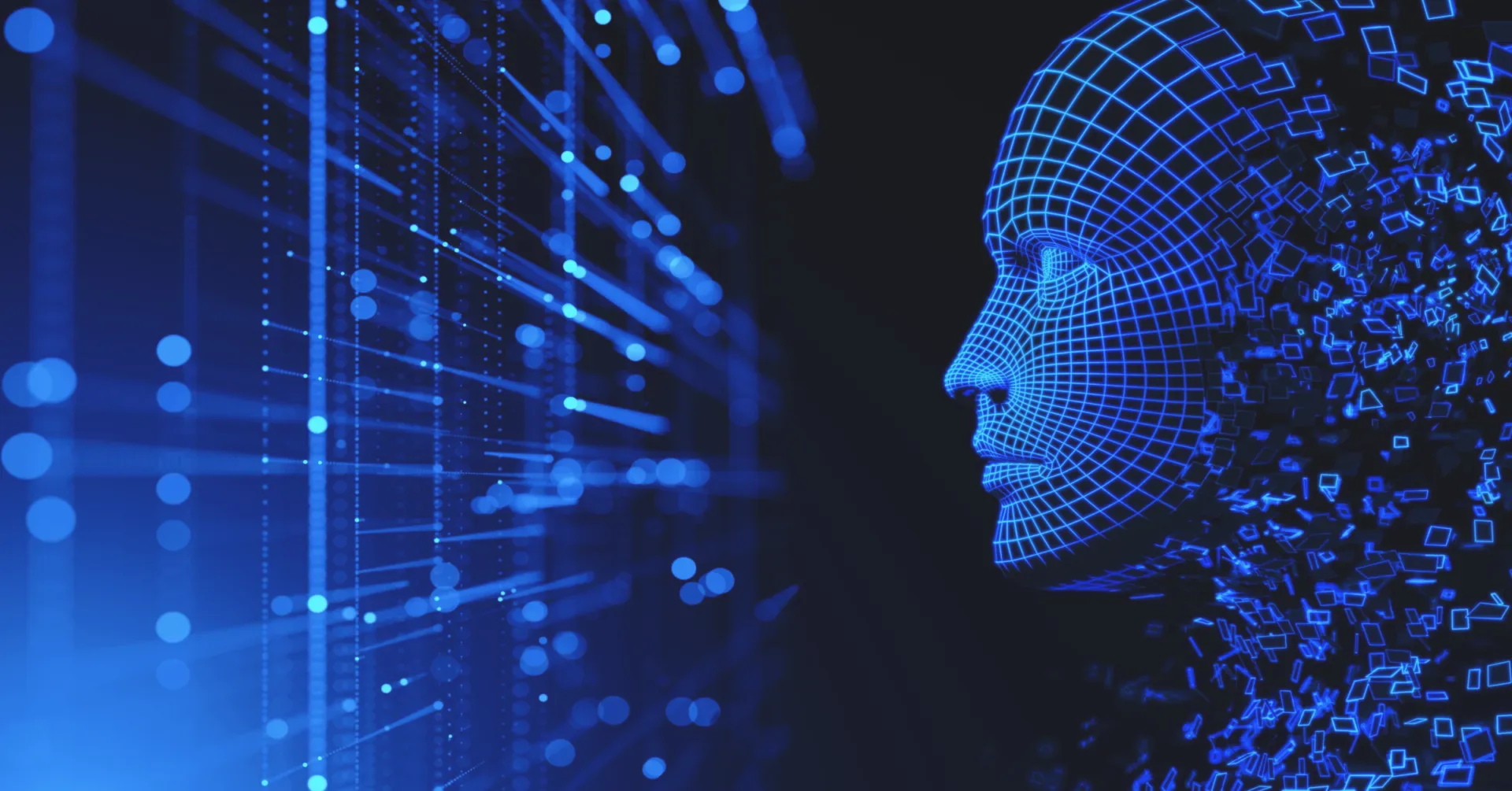What would you like to explore?
Dive into our research, insights, and client success stories to learn how to navigate change and unlock value faster.
Or browse the topics:
Topic
Industry
Content Type

By e-Core
•
July 1, 2025
For this episode of e-Core’s Fireside Chat, we explore how trusted advisor relationships help organizations unlock the true potential of human-AI collaboration. Host Dan Teixeira, NA Managing Director at e-Core, sits down with Nicole Bruno, Head of Client Strategy and Success at e-Core, to reflect on the importance of empathy and human connection in tech-enabled environments. While AI and frameworks can optimize our processes, it’s people who bring creativity, problem-solving, and transformation to life. From navigating strategic pivots to supporting executive teams, the conversation dives into how building trust and truly listening to clients leads to smarter collaboration and better outcomes, with or without AI. As Nicole puts it, “people are the work.” And in a world of increasing automation, this episode reminds us why putting humans first is what makes change sustainable. Join us as we explore ways of leveraging team collaboration in an AI era with a human-centered mindset. Key moments: 00:37 Introductions 02:07 From Subject Matter Expert to Trusted Advisor 03:56 Connecting teams, building bridges 06:40 Having the right culture fit 08:43 Human touch: people are the work 10:21 Dealing with AI in the workplace 12:38 Personalized approach 14:26 How AI builds a holistic view 15:52 How to leverage AI use for increased collaboration 17:48 The key to human-AI collaboration success

By e-Core
•
June 16, 2025
Digital transformation is no longer optional—it’s necessary for businesses across all industries. In today’s fast-evolving landscape, organizations that fail to adapt their systems of work risk losing relevance and competitiveness. However, digital transformation isn’t just about adopting new technologies. It requires a continuous structural and cultural evolution that reshapes how work happens today and drives future success. Many organizations face a critical challenge: implementing technology without addressing process inefficiencies, cultural shifts, and organizational structures. This often leads to misalignment, data silos, and poor collaboration, directly impacting business outcomes. Companies need a structured, systematic, and business-aligned approach to achieve true digital transformation. This is where Atlassian’s System of Work comes in—providing an integrated set of solutions and best practices that empower organizations to streamline their transformation journey and maximize results. The four pillars of digital transformation Digital transformation only succeeds when combined with organizational, agile, and cultural changes. Simply digitizing inefficient processes or investing in technology without preparing teams for a new way of working limits success. Atlassian’s System of Work supports this essential shift, often overlooked by organizations. These four interconnected pillars lay the foundation for long-term success: Digital transformation: leveraging digital technologies to optimize processes, enhance operations, and create new business models. Example: implementing AI and analytics to automate workflows. Organizational transformation: structural and cultural changes that improve efficiency and competitiveness. Example: breaking down silos and reorganizing teams for agility. Agile transformation: adopting agile principles to create faster, more adaptive processes. Example: implementing scalable agile frameworks across the enterprise. Cultural transformation: shifting mindsets and values to foster collaboration and innovation. Example: encouraging experimentation and continuous learning in the workplace. → Read more: six tips to create valuable automations in Jira What is Atlassian’s System of Work? Atlassian’s System of Work is a comprehensive approach to work management, built around a portfolio of powerful tools, including Jira Software, Jira Align, Confluence, Trello, Bitbucket, and Jira Service Management. This approach eliminates silos, enhances collaboration, and ensures transparency and efficiency across the organization—leading to greater predictability and agility in workflows. Why was the System of Work created? Atlassian’s System of Work was developed to address a critical business need: integrating all aspects of work so that diverse and distributed teams can collaborate effectively and transparently. It helps organizations overcome common challenges such as: Lack of alignment between strategy and execution Poor visibility into project progress Difficulty synchronizing different departments and functions Low predictability and complex change management With this structured approach, companies can align teams more effectively, eliminate inefficiencies, and accelerate value delivery to the market. Business impact: what’s in for companies? Adopting Atlassian’s System of Work drives tangible business benefits, including increased organizational scalability, data-driven decision-making, and improved operational efficiency. By reducing manual work and streamlining workflows, productivity rises while fostering a more collaborative culture. Additionally, optimized resource allocation reduces costs and accelerates time to market. Market data indicate that companies utilizing this approach experience significant benefits, including productivity increases of 25% to 30% and reductions in delivery times of up to 40%. Atlassian’s ability to seamlessly connect tools, processes, and data across teams drives this success. This interconnectedness — referred to as “network extension” in the System of Work framework — creates a more fluid and efficient digital ecosystem. How to use Atlassian’s Network Extension practically 🔹 Tool Integration: the System of Work connects tools like Jira, Confluence, and Trello into a unified platform, ensuring centralized data access. 🔹 Team Connectivity: it fosters collaboration across distributed teams, breaking down functional silos. 🔹 Automation & Workflow Optimization: Atlassian enables cross-functional workflow automation, eliminating bottlenecks and boosting efficiency. 🔹 Visibility & Transparency: from C-level executives to individual contributors, everyone has access to a single source of truth, ensuring real-time progress tracking. 🔹 Unified Communication: Platforms like Confluence and Slack integrations help centralize information, preventing data loss and fragmentation. → Read more: how Jira Service Management bridges IT and business goals How to implement Atlassian’s System of Work successfully Atlassian’s System of Work redefines organizations’ way of operating, connecting strategy, execution, and collaboration to fuel digital transformation. As a Platinum Partner, e-Core specializes in digital transformation, System of Work optimization, and Atlassian solutions implementation across enterprise environments. If your organization seeks greater strategic alignment, efficiency, productivity, and collaboration, reach out to us to accelerate your transformation journey.

By e-Core
•
November 5, 2024
About the client The client is the first fintech specialized in import solutions for businesses in Brazil and Latin America that offers financial solutions in credit, financing, and currency exchange, along with technology solutions that simplify, streamline, and unify services on a single platform. The company stands out through three fundamental pillars: Technology : A team of programmers specialized in innovative solutions. Financial Expertise : Financial knowledge to identify the best products and maximize results. Import Focus : Founded in international trade with a long history in one of Brazil’s leading trading companies. The challenge The company operates through Sales Development Representatives (SDRs) who create business opportunities by contacting clients through various channels, including direct phone calls with leads. The business challenge was to extract quality metrics from these calls and ensure optimal use of the sales pitch , improving SDRs’ operational quality and increasing business opportunity conversion. Previously, all call analysis to identify service improvement points , pitch adjustments, and service quality assessments were conducted manually by the manager, who would listen to each call’s audio and perform evaluations. To help generate automated reports for analyzing these calls, e-Core offered support with a custom artificial intelligence solution using AWS resources . The solution The solution begins by using the SDRs’ phone call recordings with leads. The first step was to create a processing pipeline to convert the recordings into text. With the transcribed audio, we used Generative AI to evaluate the call. We developed a prompt to assess the dialogue between the SDR and a lead, analyzing aspects such as pitch adherence, communication skills, and presentation of the company’s product and services. The final analysis result provides constructive feedback focused on areas for improvement, development, and motivation for the SDR. We used a Generative AI model to automatically transform call transcriptions into structured data with Amazon Bedrock, extracting and organizing essential fields, and generating constructive feedback to improve SDR performance. The resulting file is stored in an AWS S3 bucket and sent to the manager’s area on the company platform via an AWS SQS queue. Below is the architecture of the custom solution developed by e-Core.

By Bernardo Costa e Marcelo Trojahan
•
August 28, 2024
Artificial Intelligence (AI) is a transformative force in today’s digital landscape, yet terms like Machine Learning (ML), Deep Learning (DL), and Generative AI (GenAI) are often used interchangeably, leading to confusion. This article aims to demystify these concepts, highlighting their differences and significance in the current industry. Investments in AI are becoming increasingly substantial ( “Stanford AI Index report” published at World Economic Forum , KPMG , Unite.AI , All About AI ). However, many people still lack a clear understanding of the differences between AI, ML, DL, and GenAI. This gap often leads to unrealistic expectations and misdirected investments. So, how do these technologies differ, and how can we apply them effectively? Our goal is to provide a clear understanding of these concepts, presenting the perspective of authors Ian Goodfellow, Yoshua Bengio, Geoffrey Hinton, and Andrew Ng. They have extensively addressed these concepts and their applicability in solving specific problems, which will be discussed throughout this article. What is Artificial Intelligence (AI)? AI is a broad field within computer science that aims to create systems capable of performing tasks that typically require human intelligence. It encompasses various technologies, from rule-based systems to advanced algorithms that can learn and adapt. Implementing AI can be complex and expensive, requiring high-quality data and sophisticated algorithms. AI is classified into two categories: Narrow AI, designed to perform specific tasks, and General AI, which can perform any intellectual task a human can. Within AI, Machine Learning (ML), Deep Learning (DL), and Generative AI (GenAI) are specialized subsets, each designed for different objectives and varying in complexity. These technologies, while interconnected, serve distinct roles in advancing AI’s capabilities.

By e-Core
•
August 13, 2024
This case study explores the collaboration between e-Core and a leading pulp producer, who faced a critical challenge: assessing the potential impact of frost on paper production. Frost poses a significant threat, ranging from minor disruptions to severe losses in cellulose output. Given the unpredictable nature of forest asset management, especially under the influence of climate change, our partnership aimed to develop an advanced frost detection mechanism powered by AI , enabling proactive strategies to mitigate potential losses. Opportunities The primary objective of this project was to conduct a proof of concept (PoC) to verify the ability to identify unexpected production changes, specifically those caused by frost. We analyzed data from the Monitora and Zeus systems — tools designed for real-time monitoring and data collection in forest operations — focusing on critical areas such as geographic intelligence and forest asset management, utilizing AI to manage the inherent unpredictability of this field. Project Stages Our project adhered to the CRISP-DM (Cross-Industry Standard Process for Data Mining) framework, a widely recognized methodology for data mining and machine learning projects. This structured approach guided us through six key phases, each contributing to the successful development of our AI-driven PoC. Business Understanding: We thoroughly understood the business objectives and PoC goals. Collaborating with stakeholders, we defined requirements, set key performance indicators (KPIs), and ensured alignment with the operational context. Data Understanding: We assessed the available data to understand its quality and relevance. Although Sentinel-2 satellite images were considered, they were ultimately deemed impractical due to complexities and uncertainties. Key variables, particularly meteorological factors like humidity and minimum temperature, were identified as critical for frost prediction. Data Preparation: We focused on ensuring the dataset’s quality, selecting the most relevant columns and applying interpolation to create a comprehensive data area. This preparation was crucial for feeding the model with robust inputs. Modeling: In this phase, we built the PoC’s analytical foundation. We selected appropriate algorithms, split data into training and testing sets, and continuously optimized performance using accuracy and recall metrics. Evaluation: A thorough analysis of the model’s performance was conducted, ensuring it met the business understanding criteria. Collaboration with the client’s experts helped validate predictions and refine the model as needed. Implementation/Delivery: The final phase involved implementing and delivering the PoC’s results. We worked closely with the client to validate and refine outcomes, ensuring the model aligned with both business and technical goals. Project Results The project led to significant advancements in frost detection for our pulp sector partner through a series of five experiments. Leveraging AI and machine learning models, we developed a highly accurate classifier that reliably distinguishes frost events from other anomalies. The experimentation process, involving several iterations, was vital in optimizing the model’s performance. Key Results: Enhanced Frost Detection Accuracy: The final model achieved approximately 98% accuracy in identifying frost occurrences, making it highly reliable. Refined Feature Selection: Meteorological factors, particularly minimum temperature and humidity, were identified as the most crucial variables for predicting frost, streamlining the model for better performance. Consistent Historical Data Performance: The model consistently identified frost events when applied to historical data , avoiding false positives during periods without frost. Improved Data Handling: Unsupervised learning in Experiment 5 effectively addressed challenges in labeling large datasets, enhancing the model’s robustness. Operational Impact: The AI-driven frost detection model enables proactive decision-making, helping the company mitigate potential losses from frost damage, thereby reducing operational risks and improving resource management. Advanced AI Solutions Using precise data classification, our team developed an advanced AI model capable of identifying frosts with notable accuracy. One particular experiment stood out, achieving 98% accuracy in tests and consistently validating the model’s effectiveness with previously unclassified historical data. The chosen Random Forest model, known for its efficiency and ease of training, provides a robust solution for precise frost identification. Projected Benefits Early identification of at-risk areas within forest assets Optimized resource allocation based on predictive analytics Improved accuracy in weather forecasting, enhancing operational decision-making Automation of processes leading to increased efficiency and significant cost reductions Strengthened technological innovation, reinforcing the company’s competitive market position Future Perspectives In conclusion, the Proof of Concept demonstrates the feasibility of using data from Monitora and Zeus systems, combined with AI and machine learning algorithms, to detect changes caused by frost. This approach significantly enhances forest asset management, particularly in a field as unpredictable as forestry under climate change. Looking ahead, there are opportunities to further refine the model by exploring more complex data characteristics, integrating additional relevant information, and expanding its capacity to recognize a broader range of climate anomalies.

By e-Core
•
June 11, 2024
The functionalities of generative AI have gained popularity with ChatGPT from OpenAI, sparking a series of concerns and projections for the coming years. One of the most critical concerns for an efficient AI strategy is the quality of data used to train these models . Data does not appear by chance, so ensuring access to reliable sources is essential to harness the full potential of this technology. To understand the importance of this point, we can examine the evolution of our search for information, from paper to digital. In the book “Talk to Me,” which explores the evolution of voice computing, author James Vlahos extensively discusses the development of search mechanisms. Decades ago, we sifted through hundreds of encyclopedia entries for information. With the advent of the internet, we began reviewing dozens of content pieces, a process further streamlined by the emergence of search engines. With the advancement of smartphones, we now often see only the top results on a Google search. The emergence of voice assistants a few years ago and the now-amplified potential of GenAI bring us to “position zero” in search results: we ask for information, and it is delivered to us without much knowledge of the source’s reliability or whether there was any breach of intellectual property in generating the requested content. Moreover, open solutions can be utilized by anyone. There are excellent use cases, such as assistants for code development and brainstorming ideas, but limitations still exist in terms of organizational differentiation. Hence, companies are building personalized GenAI solutions using their own databases. This autonomy ensures quality and, most importantly, creates differentiation. As Swami Sivasubramanian, Vice President of Database, Analytics, and Machine Learning at AWS, said: “Your data is the differentiator and the key ingredient in creating remarkable products, exceptional customer experiences, or enhanced business operations.” Indeed, a considerable number of companies have GenAI on their agendas due to the trend. However, many lack a robust and well-prepared data strategy to support their initiatives. Unveiling the path to AI maturity through data The Gartner AI Maturity Model comprises 5 levels, as illustrated in the following image:

By e-Core
•
May 25, 2023
Vagas , a Brazilian company specializing in recruitment and selection technology that enables valuable matches between professionals and companies, has completed the first phase of its technological evolution to improve the user experience of its job and professional recommendation services . Before this, Vagas utilized separate matching engines with non-integrated algorithms. The company developed a unified mechanism called Single Matching Engine to address this issue . At the same time, Vagas is also migrating from the Google Cloud environment to the AWS cloud and is building a data lake on the Amazon platform to house applicant, job, and company information.
News
Get more insights in your inbox
Get the latest articles and insights









